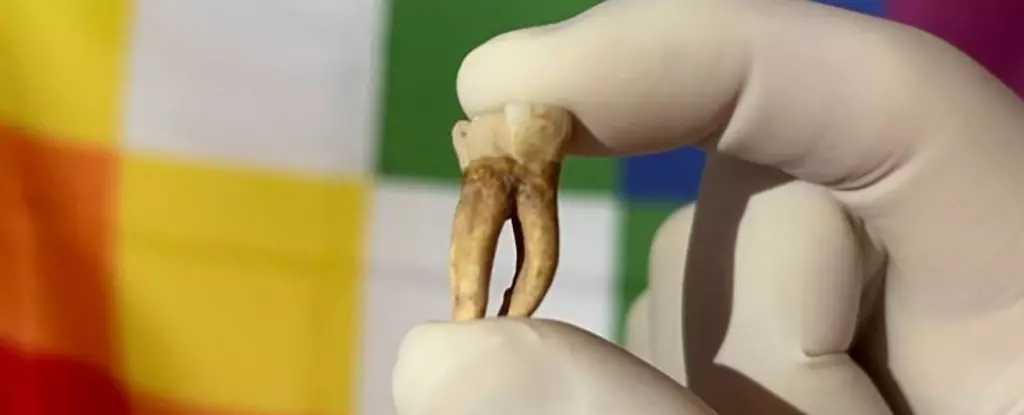For generations, historians have grappled with the belief that leprosy, that ancient and harrowing disease, was a scourge that European settlers inadvertently brought to the Americas. These narratives have crafted a tale of colonial intrusion, where foreign pathogens decimated vibrant Indigenous populations. However, a groundbreaking study casts serious doubt on this narrative, revealing instead that Indigenous Americans had been contending with leprosy long before the arrival of European settlers. This shift in understanding is not merely an academic exercise; it challenges our perception of Indigenous health and history, underlining the complexity of their experience in ways that were previously obscured.
Recent research has unveiled the presence of Mycobacterium lepromatosis, a lesser-known but significant cause of leprosy, in ancient human remains across Canada and Argentina, dating back over a millennium. This discovery, made by an international team of researchers, nuances the historical context surrounding leprosy in the Americas and emphasizes that Indigenous populations were not passive victims of colonial disease but had their own longstanding battles with this affliction. The implications of this are profound: it reshapes Indigenous narratives and emphasizes their resilience in the face of various adversities, both biological and colonial.
The Role of Modern Science
This remarkable research was spearheaded by genomicist Maria Lopopolo, who calls the findings transformative. By analyzing DNA from 389 ancient and 408 modern human samples, Lopopolo and her team constructed a genetic family tree that revealed an astonishingly rapid spread of M. lepromatosis across the American continents. Notably, this bacterium diverged from a common ancestor more than 9,000 years ago, suggesting a rich and complex history that has been overshadowed by colonial narratives. Here, science does not merely serve to chronicle the past; it challenges historical inaccuracies and provides a more intricate picture of our shared humanity.
One of the vital takeaways from the study is the potential for even more diverse forms of the bacterium, lying undiscovered in the Americas. Biologist Nicolás Rascovan highlights that the ongoing exploration into this newly identified pathogen might uncover ‘unknown animal reservoirs’ that have long been unnoticed. This assertion not only underscores the vast potential of the American landscape in harboring biological diversity but also serves as a reminder of the interconnectedness of all life—an essential concept that resonates deeply within liberal frameworks advocating for respect and understanding of Indigenous knowledge and ecological wisdom.
Revisiting the Impact of Infectious Diseases
Historically, infectious diseases have played catastrophic roles in shaping societies. The arrival of Europeans marked a devastating influx of pathogens that Indigenous communities were utterly unprepared to combat. It’s crucial, then, that we do not simplify this narrative into one of encountering an entirely foreign scourge. The emergence of leprosy among Indigenous populations illustrates that their story is far more intricate. It poses disturbing questions regarding the historical resilience and adaptability of these communities in the wake of shifting ecological and social landscapes.
With around 200,000 new leprosy cases reported worldwide annually—though treatable with modern medicine—the relevance of understanding this disease and its complex history cannot be overstated. It’s a reminder that our current constructs of health and disease are deeply rooted in historical context. Moreover, the significance of scientific strides in unraveling these dynamics is indispensable. The merging of ancient and modern DNA research paints a richer portrait of epidemiology that invites a more nuanced discourse about how we perceive contagion and community resilience in contemporary contexts.
Redefining Historical Narratives
As we stand at the crossroads of history and modern science, these discoveries compel us to rethink not just the story of leprosy in the Americas but the very narrative of Indigenous identity and resilience. Indigenous communities have suffered through the loss of life and culture brought about by both disease and colonialism, yet these recent findings illuminate a pre-colonial history of health struggles that challenges simplistic notions of victimhood. By recognizing that these communities had their own battles with leprosy, we must also acknowledge their incredible strength and adaptability.
At the intersection of public health and historical interpretation, the findings encourage a re-evaluation of how we engage with Indigenous histories. They advocate for an approach that honors their lived experiences while recognizing their agency in navigating the complexities of disease and survival. This examination is not just academic; it holds profound implications for the interruption of colonial narratives and the reparation of histories that are often disregarded. With every piece of research that emerges, we are compelled to confront our biases and reimagine the past, fostering a richer dialogue about the ongoing legacy of infectious diseases and their societal impacts.



Leave a Reply